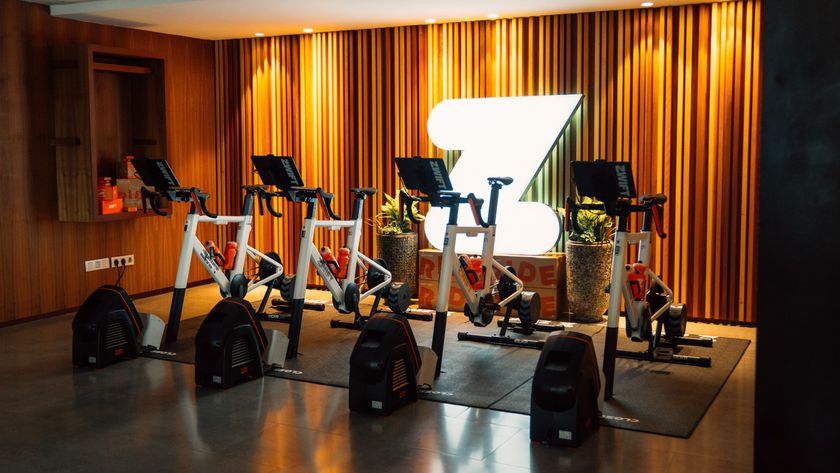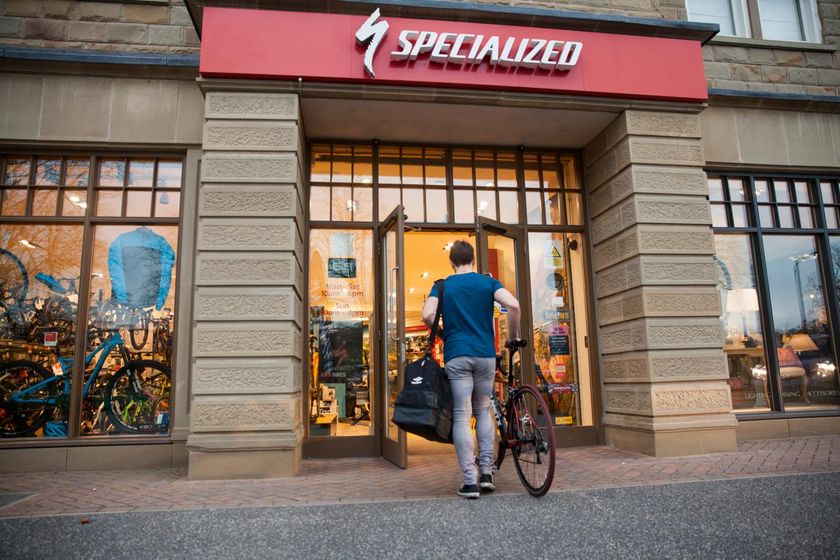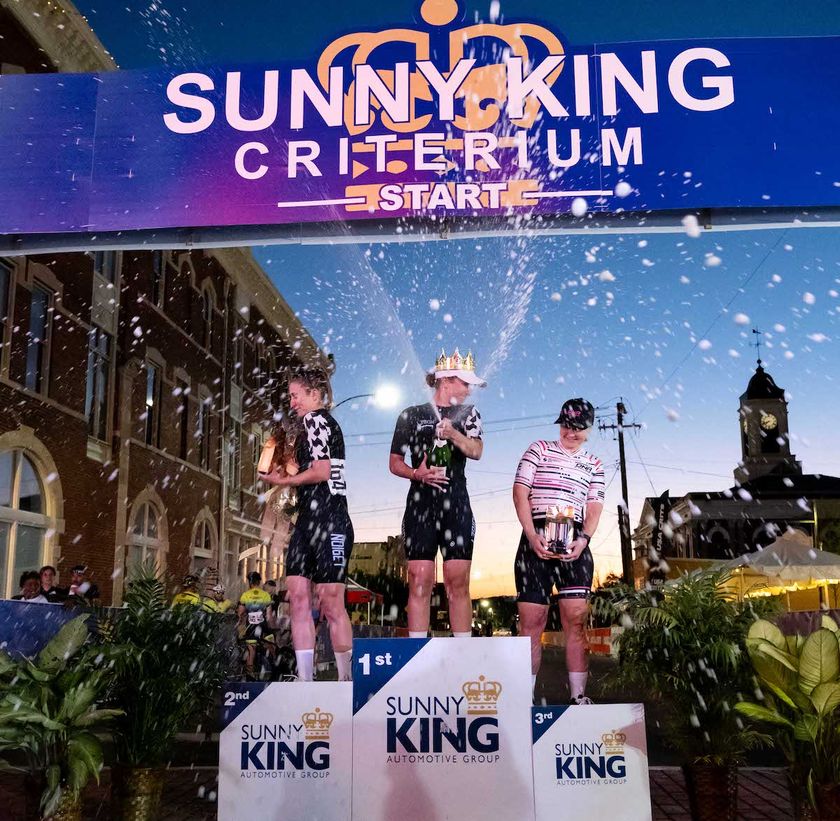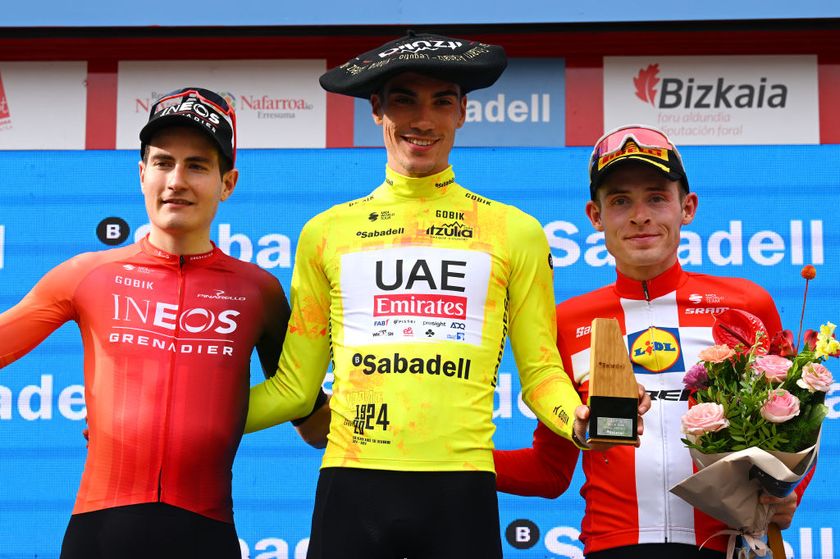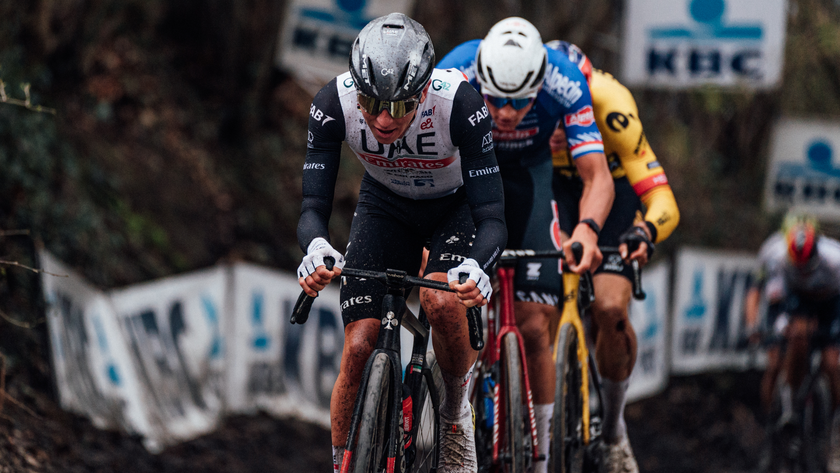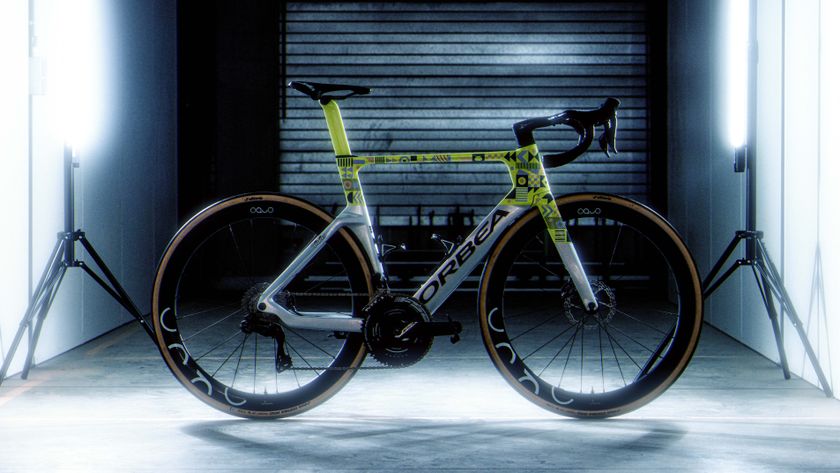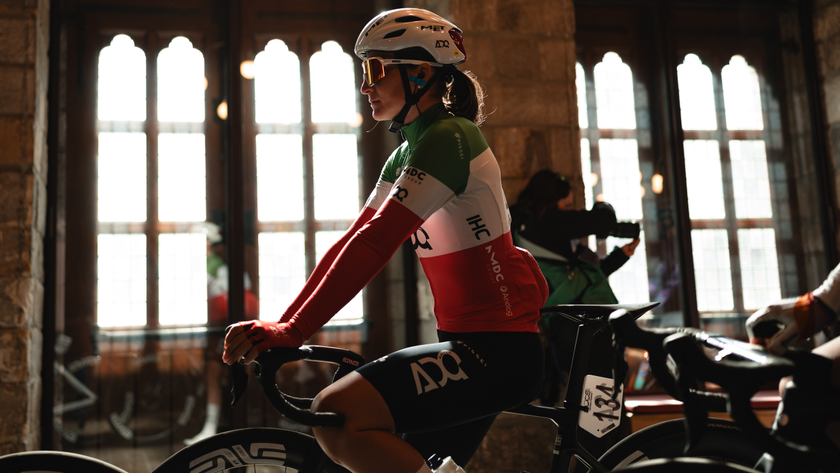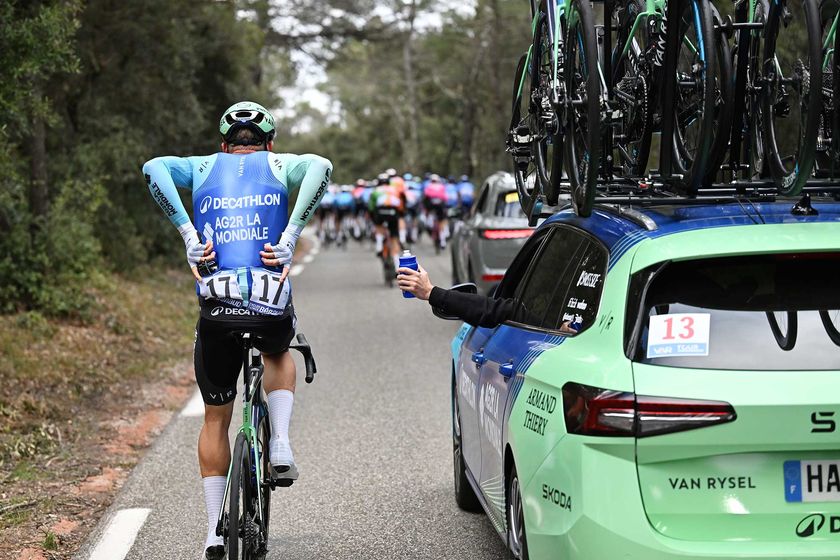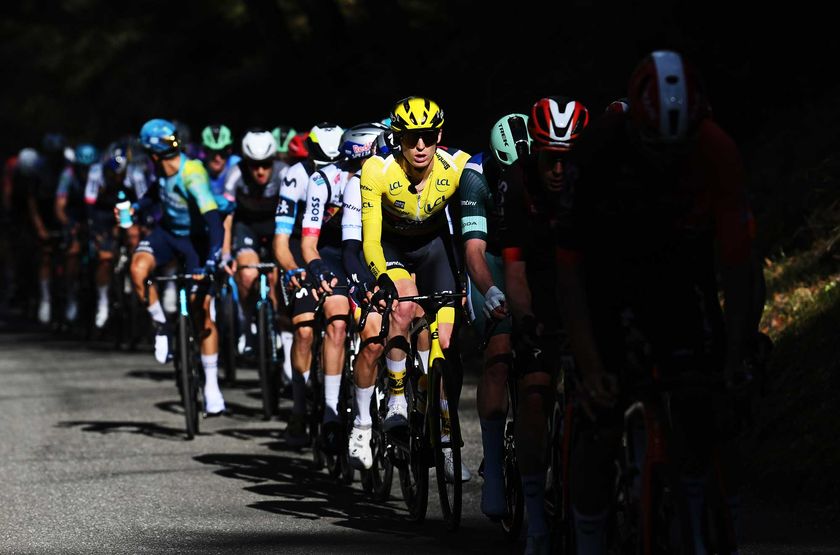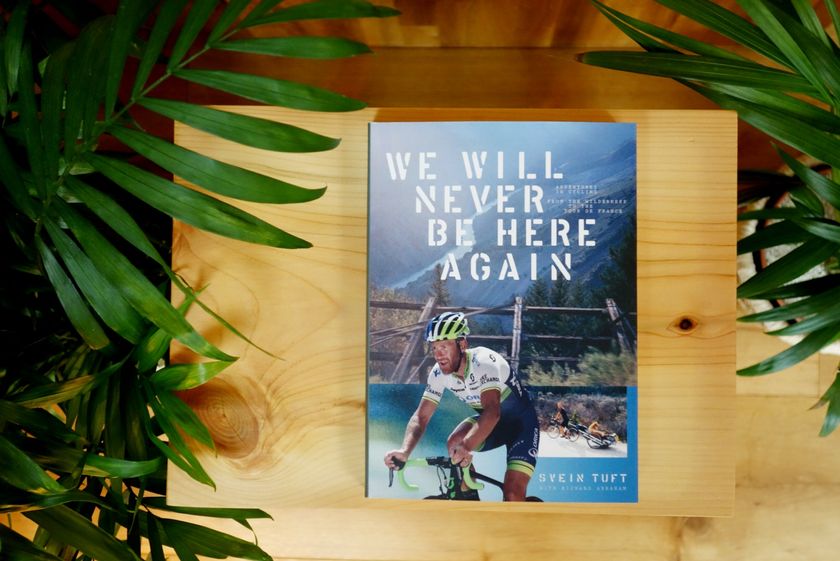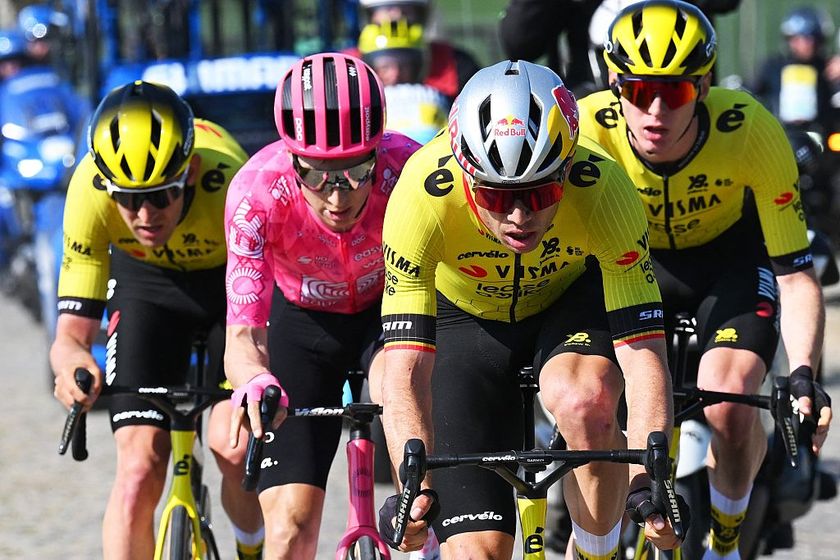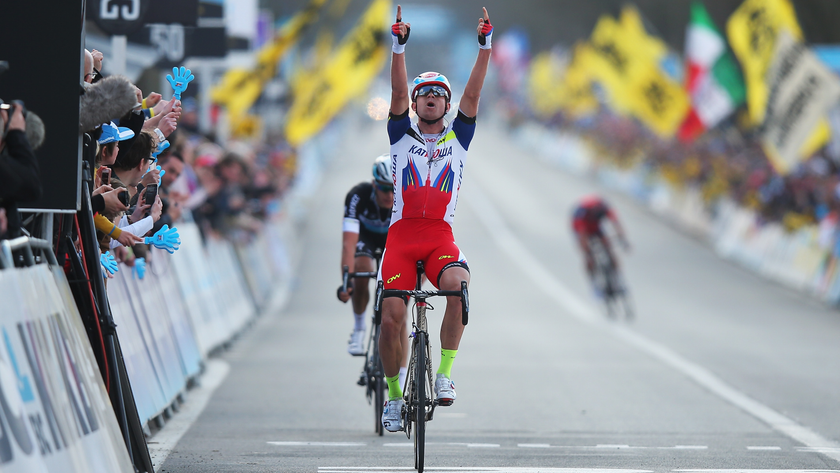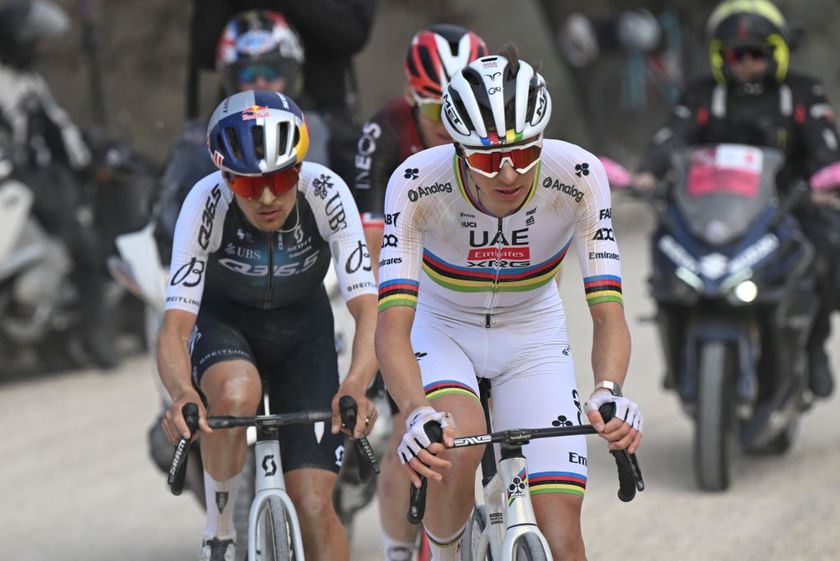Product launch: Santa Cruz Butcher, Nickel and Nomad
All-mountain options from Californian crew











































April has been a busy month for Santa Cruz, which announced three new mountain bikes for its line-up. Two of the bikes, the Butcher and the Nickel, feature the company's new Actual Pivot Point (APP) rear suspension technology, which Santa Cruz claims improves suspension performance for mid-level trail and all mountain bikes.
The third bike, the Nomad, is the company's first carbon version of its popular all mountain bike.
Santa Cruz is targeting the all-around trail rider for its Nickel, a bike set up for 120-140mm front travel and 125mm rear travel. The Butcher, on the other hand, is designed for those who enjoy a more aggressive all-mountain kind of riding, including riding down steep drops and jumping.
It was designed for 140-160mm of front travel with 150mm of rear travel. The bike was named after the Butcher Ranch Trail in the Sierra Mountains near Downieville, California. That trail drops more than 5,000 feet over 16 miles of singletrack.
The carbon Nomad is geared toward riders doing big, local backcountry riding or doing the lifts and jumps at places like Whistler.
Cyclingnews checked out all three bikes at a product launch at the company's facilities in Santa Cruz, California.
The APP advantage
Get The Leadout Newsletter
The latest race content, interviews, features, reviews and expert buying guides, direct to your inbox!
"We have more time and money invested in this APP technology than anything else we've done previously," said Santa Cruz's Mike Ferrentino. "The APP bikes sit between Virtual Pivot Point (VPP) and single pivot bikes. It's a mid-level platform."
The Nickel and the Butcher were created to make better suspension performance more affordable by implementing the APP rear suspension technology. Both bikes, with their respective 125mm and 150mm of rear travel, feature a high forward rear suspension pivot point, located on the downtube in front of and above the bottom bracket.
The APP is a single-pivot rear suspension design that utilises a pair of links to create a variable shock rate similar in those in the company's higher-end bicycles with Virtual Pivot Point (VPP) suspension technology. With these two bikes, Santa Cruz is growing its range of mid-level bikes and improving suspension performance for such bikes.
"The Butcher is a Santa Cruz Heckler with nicer suspension. The Nickel is not replacing or riding alongside anything else we have at the moment. The Blur XC has 100mm of travel while the Blur LT has 140mm of travel."
Years ago, Santa Cruz embraced single pivot suspension technology in several of its bikes including the Superlight and Heckler models. More recently, it used VPP technology on bikes such as the Blur XC, the Blur LT and the Nomad.
VPP technology (in detail below) has worked well on the trail and in the marketplace for Santa Cruz; however, the technology is more complicated than single pivot designs and more expensive to manufacture, in part due to tighter tolerances. That all translates into a more expensive price tag for consumers.
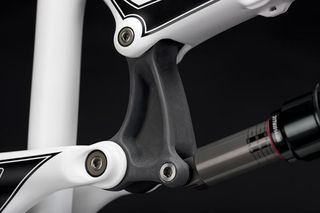
What Santa Cruz set out to do in designing the APP-suspended bike was to mimic the suspension performance of the VPP suspension technology in a single pivot bike. (Note: A bike with VPP technology does not have a fixed pivot, but a virtual pivot that moves as the bike travels through its suspension. The linkage - a pair of counter-rotating links that isolates the rear triangle from the front triangle - helps optimise the location of the virtual pivot point at each instance in its travel and lets designers manipulate shock rate).
Both VPP and APP bikes boast simiarly shaped shock rate curves: shock rate versus vertical wheel travel. Initially, both suspensions have a declining shock rate, for better small bump compliance, then the curve flattens out at its bottom before rising again as travel increases, thereby making the rear suspension feel more firm as the bike approaches the end of its travel so it resists bottoming out.
The initial declining shock rate means that more of the total suspension is used for a given bump size. In other words, the design makes the bike feel like it has more travel than there really is. Then the later rising part of the shock rate curve kicks in to provide heavier impact resistance and work against shock bottoming out. That later characteristic means better jump landing and g-out characteristics.
In contrast, single pivot bikes such as the Heckler feature a linearly decreasing shock rate with increasing wheel travel.
The high forward location of the pivot on the APP bikes (seen below) was chosen because it creates a slight degree of anti-squat, which allows for a more lively pedalling response and a more neutral reaction under braking forces than other lower, more rearward pivot point locations. In terms of pedalling effects and braking effects, the APP bikes do not ride as well as VPP bikes, but that is the tradeoff made for a simpler, more affordable design.
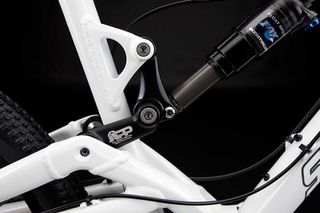
Commenting on the location of the APP suspension's pivot point, Ferrentino said, "The APP uses a high forward single pivot where pivot is roughly in line with big ring. The benefits of a high forward single pivot compared to a low rear pivot is that pedalling torque will have effect of extending suspension rather than compressing it.
"Of course, the amount of the effect varies by gear as that changes the chain angle relative to the pivot. We believe that this approach is better than trying to compress the supsension when pedalling (as is done on some single pivot bikes)."
A VPP bike will experience up to 17mm of chain growth during pedalling while an APP bike will experience up to 24mm chain growth. The larger the chain growth the more noticeable the pedalling effects. Santa Cruz has optimized the design for riding in the middle chainring on both bikes.
According to Ferrentino, the APP is the least reactive under braking of any single pivot suspension design, however.
How it came to be
The APP name initially came about as a spoof on "Virtual Pivot Point" and was used in joking reference to Santa Cruz's single pivot bikes around the time the company began working on VPP bikes more than a decade ago.
The APP moniker resurfaced when it came time for Santa Cruz to name this new technology and since it accurately described what was going on, the name stuck. Interestingly the APP bikes have the same high forward, single pivot locations as Santa Cruz's single pivot bikes.
"We built five different shock rate bikes and rode them next to each other for weeks, along with a Heckler. The one we liked the most was the one with the shock rate of our VPP bikes," said Ferrentino. "The engineers realised they could get the same shock rate without the floating shock and the extra parts that make it hard to pump your shock or adjust your rebound damping."
After four years of work into the design, APP technology was patented in 2009. The Nickel and Butcher are the first production bikes to incorporate this technology.
Checking out the hardware
In the main swingarm pivot and the APP link/swing link pivot, Santa Cruz uses 15mm diameter aluminum axles that roll on angular contact bearings save for the two that connect the lower APP link to the swingarm. The axles thread directly into their swingarm or counterpart link on one side of the bike and feature a locking collet head on the other.
The axle and bearing have been designed to be easily servicable, and the rear shock is positioned in such a way that it is easy to access for tuning, maintenance, pumping, etc. without having to remove other bike parts.
The forged aluminum APP links may look the same for the Butcher and Nickel, but they have different geometries, which lets Santa Cruz control the suspension performance for the different travels of the bikes.
Details, details, details
The Nickel and Butcher frames are made of 6000-series hydroformed aluminum tubes. Cable stops have been built into the frame to accommodate dropper seat posts. Given its more all-day trails orientation and its billing as "an aggressive cross country bike", the Nickel features two water bottle mounts, one above and one below the downtube, while the Butcher has one.
Both bikes comes with Santa Cruz's bottle opener built into the rear drop out-all the better to efficiently open the post-ride beer.
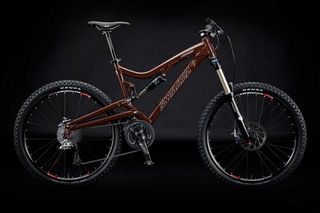
The Butcher (pictured above) has 67.5-degree headtube angles, 72.0-degree seat tube angles, 13.8" bottom bracket heights and 17.1" chainstays in all of its sizes. Reflecting its more cross country orientation, the Nickel has a 68-degree headtube angle, a 72.5-degree seat-tube angle and a 16.7" chainstay. The bottom bracket is at 13.6", but the top tubes range from 0.3" (small) to 0.5" (all other sizes) longer than the Butcher.
The bikes will be available in Santa Cruz's standard medly of powdercoat colours: red, white, black, yellow, seabright blue, and chocolate.
"We are not doing any more anodised colours after this summer," said Ferrentino. "We do all of our own powdercoating here in house. We also changed our decal process to use water transfer decal and then we clearcoat on top of it."
"Our frames come from Taiwan in raw state which makes it easier for us to do quality control there and here better. It lets us react to changes better - like if one colour ends up being more popular, we can adapt. We've never done anodising in house, which gives us less control over the colours/size/ options.
It's expensive to maintain extensive inventory of all sizes and colours, and you end up with some left over. You can't re-colour an anodised frame without losing tube wall thickness which affects the design and durability."
Going Nomadic
The Nomad Carbon bike (below) is an upgrade over the company's Nomad and it is exactly what it sounds like, a carbon version of the Nomad. The bike features 160mm of travel and VPP suspension and is targeted toward all mountain riders. It is the Santa Cruz's fourth carbon fibre bike.
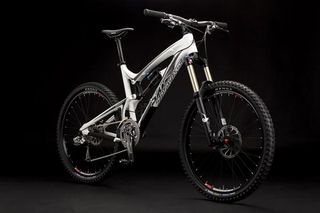
"We started experimenting with Blur XC one-and-a-half years ago. We have a long history of aluminum. The Blur XC we had at that point weighed 5.2 lb, with frame and shock, and it was flexy and weak. None of us who worked here rode them," said Ferrentino. "It was flexy and handled kind of badly. We started investigating carbon fibre as a way to get a cross country race bike out. The carbon Blur XC weighed one pound less and was stiffer and handled better."
Pleased with its early success in carbon fibre, Santa Cruz moved ahead with making some of its other bikes in carbon, too.
As expected, going with a carbon design produced a lighter, stiffer bike, relative to the aluminum version. The company boasts that the frame with shock (medium black-gold frame with Monarch 3.3 shock) weighs 6.1 pounds.
"Carbon fibre is much tougher than people give it credit for... if it is built right," said Ferrentino. "We use a one-piece lay-up process. Many manufacturers start out with several frame pieces, tube to tube, then you wrap them together and put them in a mould to bake it together to form the frame."
"We have a carbon fibre head tube and botton bracket insert. The rest is wrapped in place by two people in one sitting. They have mandrels and outer moulds to form the frame. Carbon fibre plys are wrapped around them. It takes two people working together two to three hours to get a frame's front triangle ready to go into the oven. Then the frames are baked. Our process is more laborious and requires a degree of dexterity that most people don't appreciate."
The company uses a mix of 3K weave, unidirectional (UD) and aramid fibers. During lay-up, extra material is added along the downtube and head tube junctures, chain stays, and at other key points in the frame that experience the most stress during use.
"Shock ears, derailleur mounts, pivots, etc. are moulded into the frames directly, not bonded on afterward. That gives us a more resilient end package."
"The frame's one-piece nature and the precise shaping of molds lets us use a minimum amount of material which also keeps waste to a minimum," he said.
The bike features a 1.5" head tube and ISCG05 tabs and titanium hardware. The lower link, with 12 and 15mm pivot axles, has grease ports built into it.
Santa Cruz built in a downtube protector to preserve the bike against impacts with rocks or other objects and in the event of crashes. A simple piece of pleather - otherwise known as imitation leather - is not only on the bottom bracket, but also on the seat tube and chain stay on the right side.
"We looked at a lot of options and this material, like what you would find on a tennis racket, was what did the best. It holds up, doesn't show a lot of damage," said Ferrentino.
"We build our bikes expecting that riders will crash," said Ferrentino. The company has an extensive in-house testing facility (which Cyclingnews toured but was not permitted to photograph). The facilities feature head-on impact testing and fatigue tests run by loading the frames in various ways to simulate many hours of hard riding conditions.
The Nomad's geometry includes 67-degree headtubes, 71.5-degree seat tubes, 14" bottom bracket height and 17.4" chain stays -across all four sizes. It has the same geometry and travel as the Aluminum Nomad, but it is 1.1 pounds lighter.
First rides: Nickel and Nomad
Cyclingnews took both the Nickel and the carbon Nomad on first test rides while attending the product launch in Santa Cruz, California. Both bikes were ridden on the mostly wooded trails on and surrounding the University of California's Santa Cruz campus. The bikes were also ridden there and back on a mix of paved roads and trails.
The first bike to get dirty was a black, sized medium aluminum Nomad. Sitting on the bike, my initial impression was one of comfort. The default position had me sitting perfectly perched atop the bike in a fairly conventional cross country-like position. The 23.0-inch top tube gave plenty of room to stretch out, feel powerful and settle in on the bike.
Riding to the trails, I noticed I wasn't wasting any energy bobbing around. With the ProPedal option flipped on, the suspension remained still and quiet as we spun along towards the trails. Of those in our group, some noticed signficant bobbing with the ProPedal flipped off. As set up, my test bike rode well either way. although the ProPedal did make the ride firmer for efforts out of the saddle.
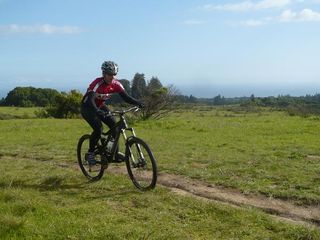
On the trails, the Nickel felt lively, like an eager dance partner. We didn't encounter any rock gardens, but we did ride plenty of wet, slippery roots on damp trails. The suspension ate the roots, ruts and drop offs right up and it often felt a little springy - in a good way, like it was ready to respond any time it was called to do so.
Ferrentino had said, "We try to have diversity of uses in our bikes, so you can use a lot of them for racing, all day rides, marathons, etc. The Nickel and the Butcher aren't oriented towards racing, but I would race them if on a budget."
I agreed with his assessment. The Nickel didn't feel like a purebread race bike, but more of an all-day ride kind of a bike. But if it's what I had, I would race it, too.
One downside to the design is that the frame can't comfortably accommodate a large water bottle on the top of its downtube. A large bottle interferes with the ProPedal mechanism."
We felt a little pedal tug in some riding circumstances on the Nickel, but it was not significant enough to take away from our favourable impression of the bike. All in all, the experience of riding the Nickel was a comfortable, engaging one that suggests it would be fun to spend more time on the bike. For a mid-level 120mm travel full suspension bike, it rode well uphill and downhill and seems to be a good deal at the current price.
The carbon Nomad also got a test spin of about three hours, including some of the same trails. With its VPP suspension and its carbon frame, the bike did indeed feel plusher to ride. It also rode quietly, as we flowed through the woods, the bike stealthily progressed underneath.
Unlike the Nickel, the Nomad's position was a more conventional all-mountain position by default. Set up both a 0.25-inch shorter top tube and with a shorter stem, the position felt shorter and higher up front.
The handling of the bike felt very intuitive from the start, especially the turning. The 160mm travel (set up both front and rear on the test bike) felt well balanced and confident. There was no need to steer around obstacles - though you still could have thanks to the handling - the bike ate up whatever rocks and drop-offs I was able to throw at it.
Climbing on an all mountain bike is... well, climbing on an all-mountain bike. Switching on the ProPedal helped to keep things smoother while climbing steady grades in a seated position although even with it engaged we noticed some bob, especially standing up to climb.
The front end always stuck to the ground however, whether we were seated or standing. On the steeper stuff we tended to drop it in granny and spin up to be more efficient... and to compensate for being used to riding lighter bikes uphill. The few times I had to hike-a-bike, I appreciated the lighter carbon frame as it was easier to push uphill or carry over the few trail obstacles we encountered.
Overall, the bike felt very stable and surefooted, especially on steeper downhills and narrow singletrack carved into the sides of the mountain. It stayed on a tight and narrow course when directed to do so, but also steered well when called upon to turn.
The bike was perfect for riding down the trails we descended and rolled along. Clearly the Santa Cruz engineers have spent plenty of time tuning their design with local on-bike testing.
Miscellaneous note: Downhill World Champion Steve Peat and Greg Minnaar (Santa Cruz Syndicate) will use a hybrid bike at the dual slalom at Sea Otter. They will race Nickels with Butcher top tubes and lower bottom brackets and slacker head angles.
Product info:
Nickel & Butcher
Available colours: chocolate, black, seabright blue, red, white and yellow
Available sizes: small, medium, large, x-large
Availability: June 15 in the US, mid-June/July in the UK, October in France.
Weights: 6.65lb (Nickel), 6.73 lb (Butcher)
Components: TBD (based on 2011 component lines, many of which will be launched at Sea Otter this week)
MSRP: Butcher frame with Float-R shock - $1,350. Complete bike expected for just under $2,000.
Nomad
Available colours: white black
Available sizes: small, medium large, x-large
Availability: June 15 in the US, mid-June/July in the UK, October in France.
Weight: 6.08 lb (with Monarch 3.3 rear shock)
Components: TBD (based on 2011 component lines, many of which will be launched at Sea Otter this week)
MSRP: $2,499 with frame and Monarch 3.3 shock. Add $198 for DHX 5 Air shock or $298 for DHX RC4 shock. Complete bikes with R kit start at $3,650. A complete bike with an X-9 kit will cost $4,950.
Sue George is an editor at Cyclingnews. She coordinates all of the site's mountain bike race coverage and assists with the road, 'cross and track coverage.
